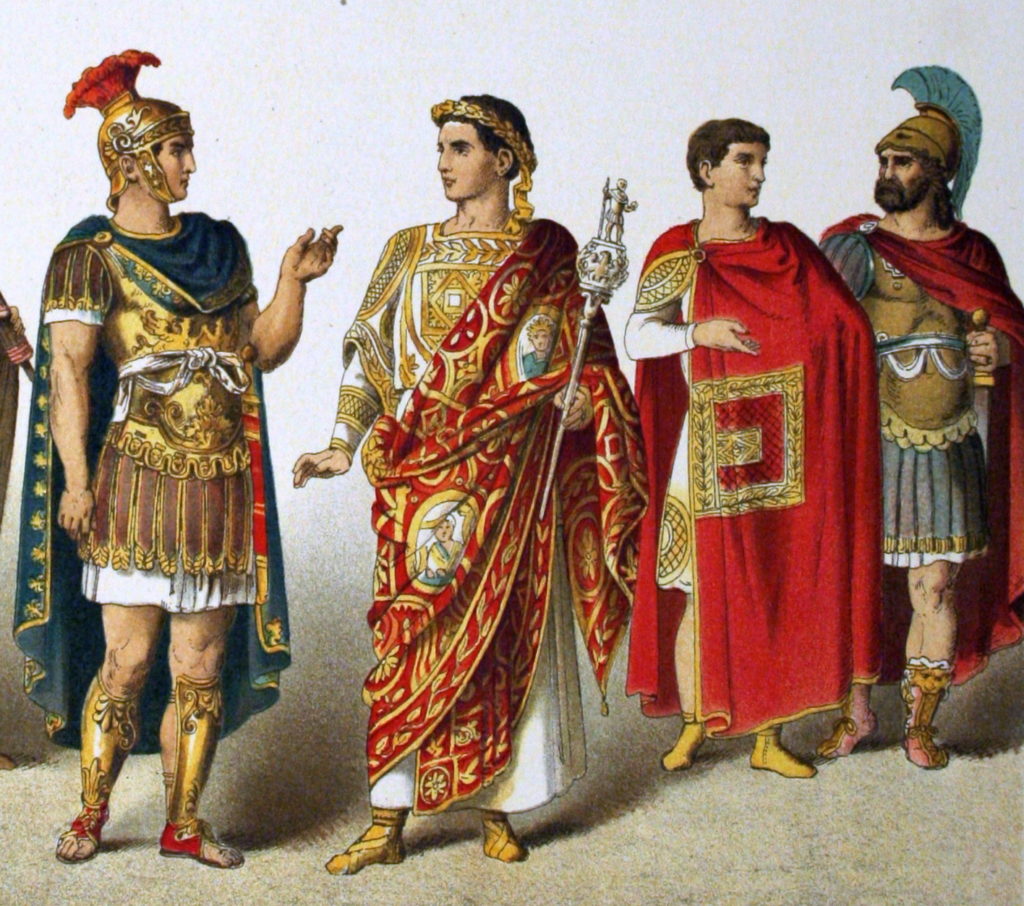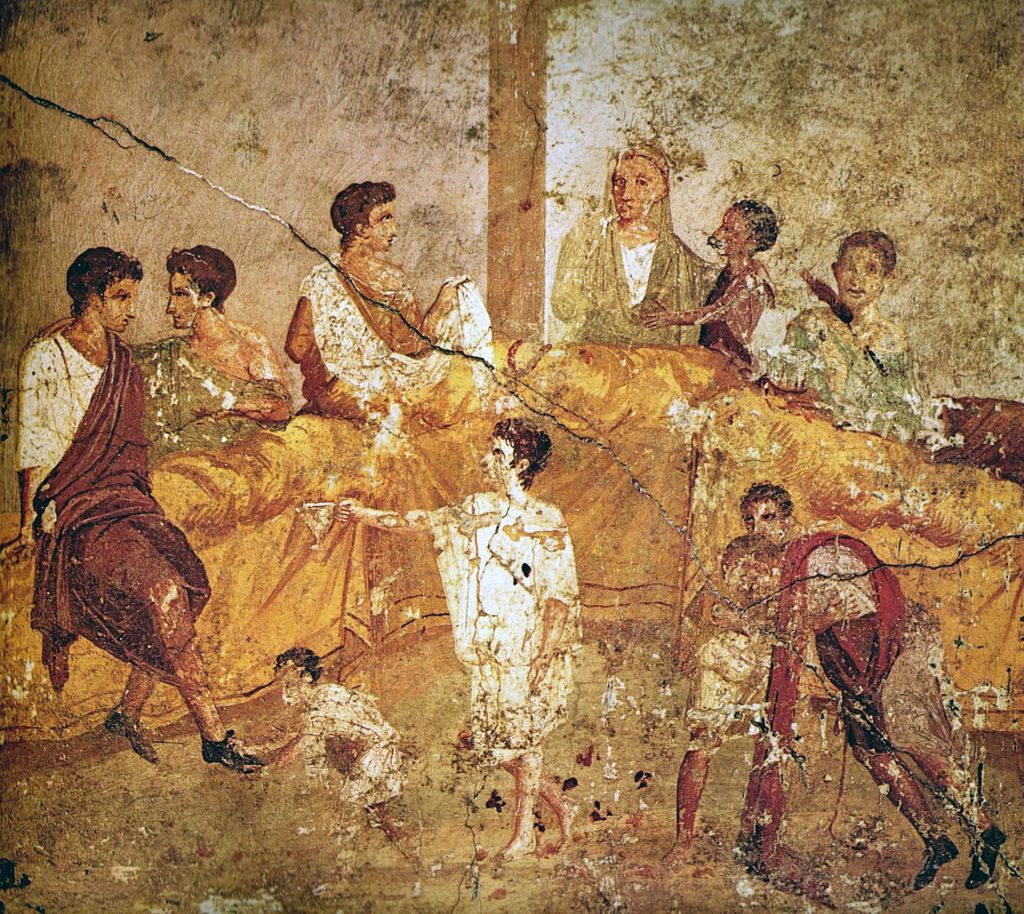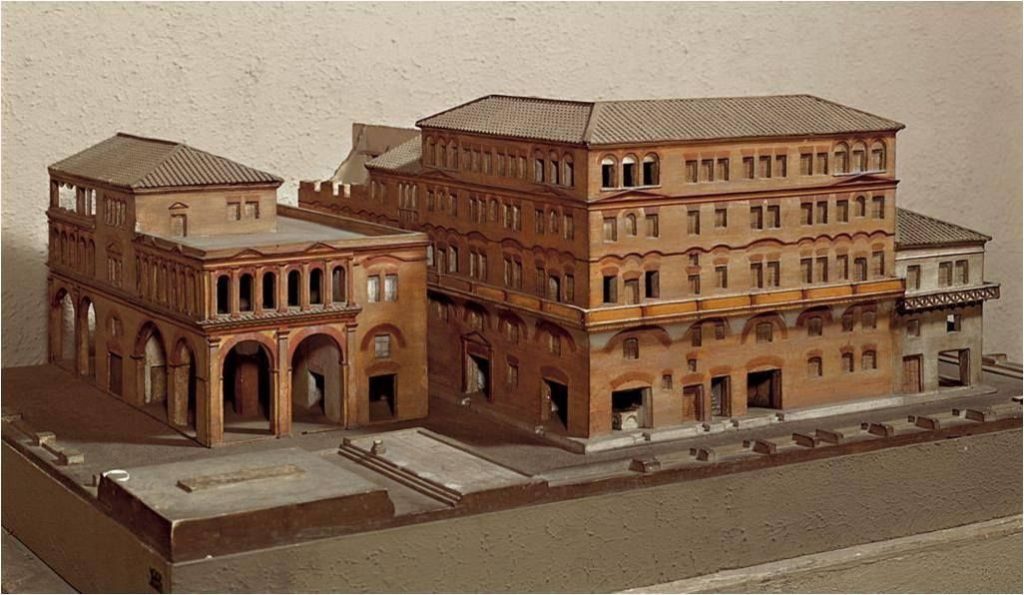Last updated on January 31st, 2023 at 01:34 am
Ancient empires lasted longer, generally speaking than modern states. For example, the Pharaohs ruled Egypt for a staggering period of 3,000 years. That’s twelve times longer than the United States has been around.
Yet, even though these ancient societies constitute the bulk of human history, we often know little about how the average person lived in ancient times.
One of the few exceptions to that rule is the Roman Empire, for which we have rich information to reconstruct what daily life was like for a resident of the great empire.

The Life of a Roman
Rome was an empire of cities and towns. At its height in the second century CE, the empire’s population was between 70 and 80 million. 25% to 30% lived in towns, a rate of urbanization that would not be seen again on Earth until the nineteenth century.
Rome was the greatest of these cities, with perhaps a population of one million at its peak in the second century CE. For our purposes here, we will assess daily life in the Eternal City at this time.
The average Roman rose before sunrise. This was an age before electric light, and people took advantage of the Sun’s natural rays as much as possible.
Breakfast was light, consisting of little more than pancakes and water, perhaps with some watered-down wine, as was the custom in ancient times. Then people headed to work.
The Different Classes in Rome
The poorer classes would have worked in food preparation, construction work, and the many other types of manual labor involved in a society that did not have machines to carry out such tasks.
Enslaved people were ubiquitous, making up 25% of the population, and would have been seen everywhere in Rome, though their lives were perhaps not as grim as those of enslaved people in other societies.
The middle classes might have worked as scribes and bureaucrats in an empire that needed hundreds of thousands of administrators and writers, as the Romans never developed the art of printing.
The upper classes were leisured and did not work in the modern sense.
Lunch for the average Roman consisted of cold cuts of meat, cheese, fruit, salad, and of course, bread, the latter of which was provided as a free ‘dole’ staple to every free Roman.
Most Romans worked between dawn and noon while the weather was cooler. By midday, the working day was over, and people would seek entertainment or visit the thermae or baths.
Here they would socialize and attempt to clean themselves, although the process was scandalously unsanitary by contemporary standards.
Entertainment in Ancient Rome
Things changed across Roman history, not least in terms of entertainment.
In the second century BCE, the average resident of Rome, when the city was still the center of a republic governed by the Senate, would have been entertained in small Greek-style amphitheaters watching the comedic plays of Terence and Plautus.
Yet, while plays remained important aspects of the entertainment on offer in Rome, the gladiatorial contests fought in the Flavian Amphitheatre, better known to posterity as the Colosseum by the imperial period, were a greater draw.
But the most popular form of entertainment in Rome at the height of the empire was the chariot races at the Circus Maximus, an enormous stadium in central Rome that could accommodate 150,000 people.
The poor were given free entry to the Circus, and most people in Rome would have supported one of the four main factions of charioteers, the Red, Blue, Green, and White factions.
Not for nothing did the second-century CE Roman satirist Juvenal claim that the people of Rome were kept docile through an endless stream of ‘bread and circuses.’
Dinner Time in Ancient Rome
Following this, a Roman might head to an acquaintance’s home or their own for supper, which was the day’s largest meal. This was lavish and could last several hours, a tradition that has never entirely disappeared in Italy.
Food was consumed using a knife and spoon. There were no forks which was a medieval innovation in dining.

Some of the food was typical of what we would eat today, with fish and pork being consumed in large amounts. However, some Roman delicacies, such as dormice, would be considered profoundly distasteful to serve at a modern dinner party.
These supper banquets were held in a varied range of domestic settings.
Wealthier Romans would have had palatial houses in the city. By the imperial period, the aristocracy had spent much of their time in villas in the countryside south of Rome towards the towns of Capua and Pompeii.

In the city itself, most people lived in the insulae. These were effectively apartment blocks that were generally seven or eight stories tall.
Shops and tabernae, the Roman equivalent of fast-food restaurants, were located on the ground floor, with apartments upstairs.
Unlike in modern times, where the wealthiest residents of a skyscraper live on the top floors, the higher one went up in a Roman insulae, the poorer the residents were.
The wealthier citizens lived just above the shops on the ground floor, as they had only one flight of stairs to climb this way, and they had the best chance of escaping if a fire broke out.
These insulae would have had a steady supply of freshwater piped into the city via the aqueducts.
They also had decent sanitation, and apartments were heated in winter using hypocausts, a type of ancient central heating where vats of water were heated under the floorboards in a fashion not too dissimilar to how a radiator works.
Life in Other Parts of the Roman Empire
Of course, life elsewhere in the Roman Empire would have been substantially different in many ways. Farming was the predominant mode of life for those who lived in the countryside.
Depending on where one lived, they would have spoken different languages, notably Greek, which remained the lingua franca of the Eastern Mediterranean long after the Romans had conquered the remains of Alexander the Great’s empire.
Depending on where one was, different gods would also have been worshipped. The Greek equivalents of the Roman deities were honored in Greece.
The long-revered Egyptian gods such as Isis, Serapis, Anubis, and Horus, who had been worshiped for millennia along the banks of the Nile, continued to have significant cults in Egypt down to the Christian period.
However, some aspects of Roman culture were universal throughout the empire by the second century CE, notably the prevalence of amphitheaters, the Roman road system, garrisons of Roman legions, and imperial taxation.
The Romans had it pretty good as long as they weren’t enslaved. It is generally assumed that living standards across the Roman Empire at its height in the second century CE were similar to those in Europe in the mid-eighteenth century on the eve of the Industrial Revolution.
Sources
Jerome Carcopino, Daily Life in Ancient Rome: The People and the City at the Height of the Empire (Yale, 2003).
Fikret Yegul, Bathing in the Roman World (Cambridge, 2010).
Fik Meijer and Liz Waters, Chariot Racing in the Roman Empire (Baltimore, Maryland, 2010).
Gregory S. Aldrete, Daily Life in the Roman City: Rome, Pompeii and Ostia (London, 2004), pp. 78–80.

